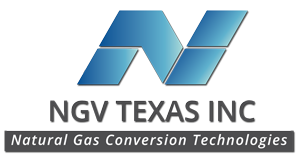NGV Texas is one of the most technologically advanced CNG conversion expert in US, specializing in developing cutting-edge CNG conversion technologies for the most popular diesel engines
NGV Texas has partnered with the leading EPA approved CNG system and tank manufactures in providing the latest CNG conversion solutions.
We provide safe, reliable, high qualify dedicated and dual fuel CNG conversion for almost every engine commonly used in the industry. Among the most popular engines that NGV Texas specialize in converting are: DT466, MB 906, MACK E7, DD60, and Cummins ISX.
About Heavy Duty CNG Conversions
Public and private fleet operators across America rely on a wide variety of vehicles powered by clean, economical, abundant and domestically produced natural gas to deliver their goods and services. And the natural gas vehicle industry represents a wide network of companies that support natural gas fleets.
Natural gas powered vehicles are proven and reliable
- Advances in natural gas engines have improved performance while exceeding EPA emissions requirements ahead of schedule
- Almost 14 million NGVs are in use worldwide, including 110,000 operating on U.S. roads.
- The International Association of Natural Gas Vehicles estimates that there will be more than 65 million natural gas vehicles worldwide within the next 10 years, or about 9 percent of the world transportation fleets.
Fleet fueling is leading the way in the United States. Natural gas powers:
- More than 11,000 transit buses,
- Nearly 4,000 refuse trucks, with California leading the way
- More than 3,000 school buses
- About 15-17,000 medium duty vehicles, such as airport shuttles and a wide variety of work applications
- More than 30,000 light duty vehicles in federal, state, local government and private fleets.
Natural gas vehicle lifecycle costs are lower
- Fuel costs are far lower. Traditionally, the ratio between and natural gas MCF and crude oil barrel prices were about 7-1. Now it ranges between 17/22-1. This favorable differential is expected to remain and grow well into the future as America has an abundant domestic supply of natural gas.
- Maintenance costs are equal to or less than gasoline or diesel
- NGVs’ already favorable lifecycle cost advantages improve with federal and/or state tax credits
Natural gas powered vehicles are quieter
- Heavy duty natural gas vehicles have a 80-90% lower decibel level than comparable diesels
A broad variety of natural gas vehicles is available
- Light-, medium- and heavy-duty natural gas powered vehicles are available from original equipment manufacturers or a qualified installer can retrofit new or existing vehicles with a certified system
- More than 50 different light-duty sedans, vans and pick-ups are available
- Factory-built natural gas options are available from all the major refuse truck chassis manufacturers and body-upfitters, most of the transit and shuttle bus builders, two of the top three school bus builders, all major street sweeper manufacturers, and leading truck builders Freightliner, Peterbilt and Kenworth.
- Sensing the momentum toward greater specification of natural gas engines, these manufacturers are investing in additional engine development and certification to expand natural gas options
- There are a variety of public- and private-access fueling station development/ownership/operation options available, from fleet owner-operated to fully outsourced.
Natural gas vehicles produce less greenhouse gases
- Natural gas vehicles reduce greenhouse gas emissions between 20-29%
- Light duty vehicles between 26-29 percent
- Heavy duty about 20-23%
Vehicular Natural Gas Use is Growing
- Industry data shows that vehicular natural gas nearly doubled between 2003 and 2009, now displacing more than 360 million diesel gallon equivalents.
- Natural gas transit buses now account for about 2/3 of all vehicular natural gas use.
- CNG and LNG waste collection and transfer vehicles, which account for about 11 percent of total vehicular natural gas use, are the fastest growing NGV segment.
- More than 35 airports across the US operate NGVs in their own fleets and/or have policies encouraging use of NGVs by private fleets operating on premises, making this sector the third largest with about 9 percent of total vehicular natural gas use.
- The successful clean port transportation initiative in Southern California is spurring adoption of similar policies in other ports on both coasts.
NGVs are a good fit for many fleet applications
- Local, state and federal government
- Airport
- Terminal business, hotel and parking shuttles, taxis, door-to-door services
- Refuse
- Collection-recycling and transfer trucks
- Transit
- Buses and administrative staff and maintenance vehicles
- Short-haul distribution/delivery
- Food and beverage, package, port-rail drayage, textile services, newspaper
- Commercial Services
- Telephone, cable, gas and electric utilities, plumbing/HVAC, pest control, janitorial/carpet cleaning, medical lab/legal courier

